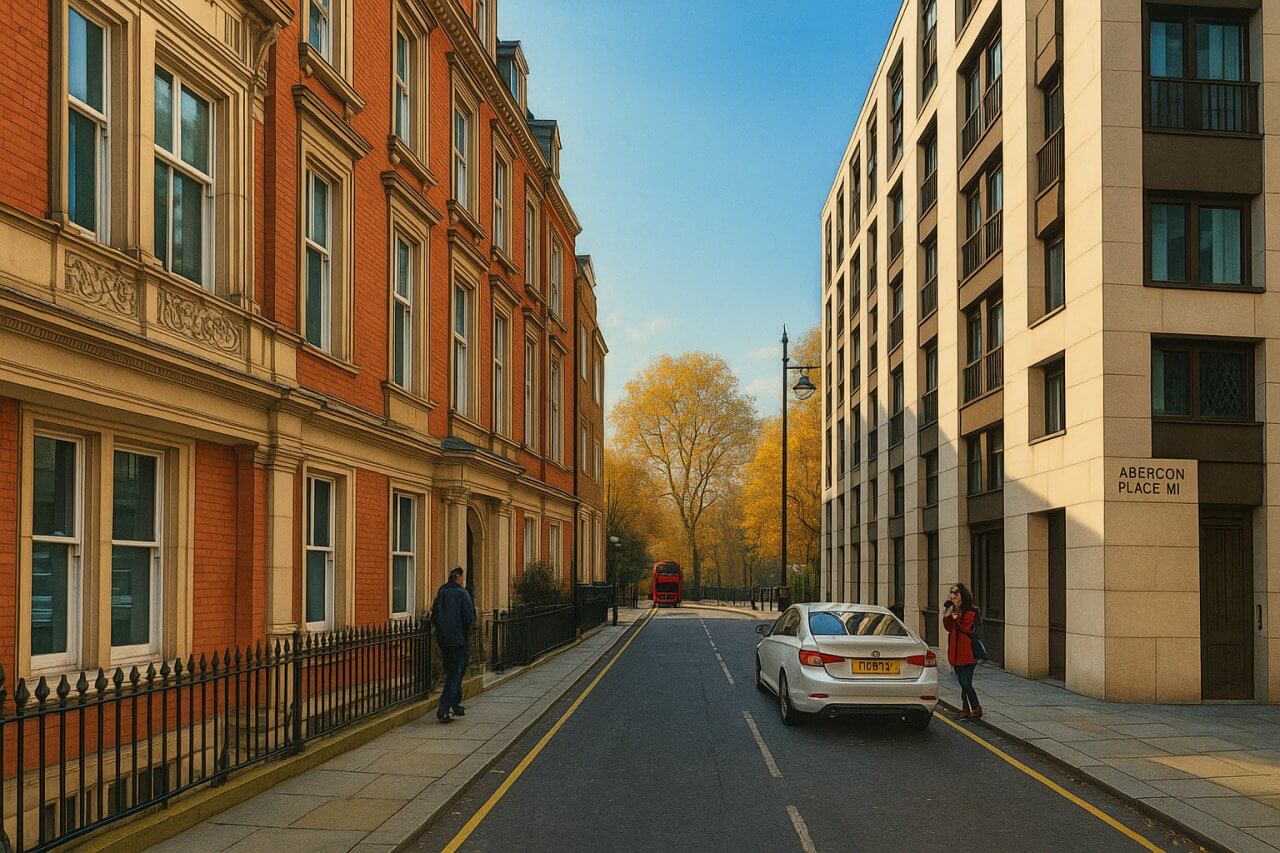
Bolton Street, London
Bolton Street is a short yet historically rich street located in Mayfair, part of the City of Westminster in central London. Positioned just north of Green Park Station, it serves as a connector between the prestigious Curzon Street in the northwest and the iconic Piccadilly in the southeast, directly across from the lush greenery of Green Park.
Orientation and Layout
Bolton Street is approximately 171 metres (561 feet) in length and is designated as a one-way road flowing southeast—from Curzon Street down to Piccadilly. Its gentle slope and relatively light traffic make it a quiet and refined passage nestled in the heart of the West End.
History and Etymology
Bolton Street was laid out in the early 18th century, with development beginning in the 1690s and intensifying in the early 1700s. It formed part of the grand development of Mayfair during the Georgian era, reflecting the ambitions of aristocratic landowners to create a fashionable residential quarter in proximity to royal parks and palaces.
The street is believed to be named after the Duke of Bolton, a title held by the Paulet family, a prominent noble family in England at the time. This naming convention followed a trend of bestowing aristocratic titles upon streets in the area to convey elegance and prestige.
Pronunciation
Bolton Street is pronounced as BOHL-tən Street /ˈbəʊltən striːt/

Character and Ambience
The street embodies a quiet elegance, combining historical charm with modern affluence. Its Georgian and early Victorian façades contribute to its traditional appeal. While some properties have been converted into offices or luxury flats, Bolton Street retains a largely residential character, with many discreet entrances and polished railings that hint at the opulence behind closed doors.
Architectural and Local Interest
One of the architectural highlights of Bolton Street is the survival of period townhouses that hint at the area's former grandeur. Many of these buildings are listed and feature classic London brickwork, sash windows, and ornate railings. Although no grand tourist attractions sit directly on Bolton Street, its proximity to notable locations makes it of special interest.
- Green Park: Just across Piccadilly, Green Park offers peaceful walks, tree-lined avenues, and direct access to Buckingham Palace.
- Curzon Street: Known for private clubs and exclusive residences, it leads into the broader area of Mayfair.
- Shepherd Market: A short walk away, this quaint cluster of alleys and squares hosts boutiques, restaurants, and traditional pubs.
Real Estate and Property Values
Properties on Bolton Street command some of the highest prices in London due to their location in the heart of Mayfair. As of 2025, flats typically sell for between £2,200 to £2,800 per square foot (£23,680–£30,140 per sq metre), depending on condition and heritage value. A mid-sized flat of 1,200 sq ft (111.5 sq metres) could sell for around £2.75 million, while a full townhouse could exceed £12 million. Rental properties are equally sought after, primarily serving diplomats, executives, and affluent residents.
Transport Links
London Underground
The nearest London Underground Station is Green Park Station, located just a few minutes' walk from the southeastern end of Bolton Street. It is served by the Jubilee Line, Piccadilly Line, and Victoria Line. These connections make it easy to access St James's, the City, and other parts of London with ease.
Bus Stops
Several nearby bus stops along Piccadilly provide service on routes connecting to Oxford Circus, Knightsbridge, Trafalgar Square, and Victoria. Common routes include the 9, 14, 19, 22, and 38, offering frequent daytime and night services.
Fun Fact
Bolton Street was once home to the famed author and politician Horace Walpole, who lived at No. 11. Known for his Gothic novel The Castle of Otranto and the construction of Strawberry Hill House, Walpole contributed greatly to 18th-century British literature and art.
Nearby Roads
Surrounding Bolton Street are several notable roads, including:
- Curzon Street to the northwest, leading towards Hyde Park Corner.
- Piccadilly to the southeast, running along Green Park and into the heart of St James's.
- Half Moon Street runs parallel to Bolton Street and offers a quieter alternative with similarly elegant architecture.
Quick Facts
- Location: Mayfair, City of Westminster, central London
- Length: Approx. 171 metres (561 feet)
- Direction: One-way, northwest to southeast (Curzon Street to Piccadilly)
- Pronunciation: /ˈbəʊltən/
- Nearest Tube: Green Park Station (Jubilee, Piccadilly, Victoria lines)
- Nearby Bus Routes: 9, 14, 19, 22, 38
- Character: Residential and refined, lined with Georgian and early Victorian buildings
- Average Property Prices (2025): £2,200–£2,800 per sq ft (£23,680–£30,140 per sq m)
- Nearby Attractions: Green Park, Curzon Street, Shepherd Market
- Notable Resident: Horace Walpole, author of The Castle of Otranto
Map of Bolton Street, London

Painting of Bolton Street, London (View image in full size)